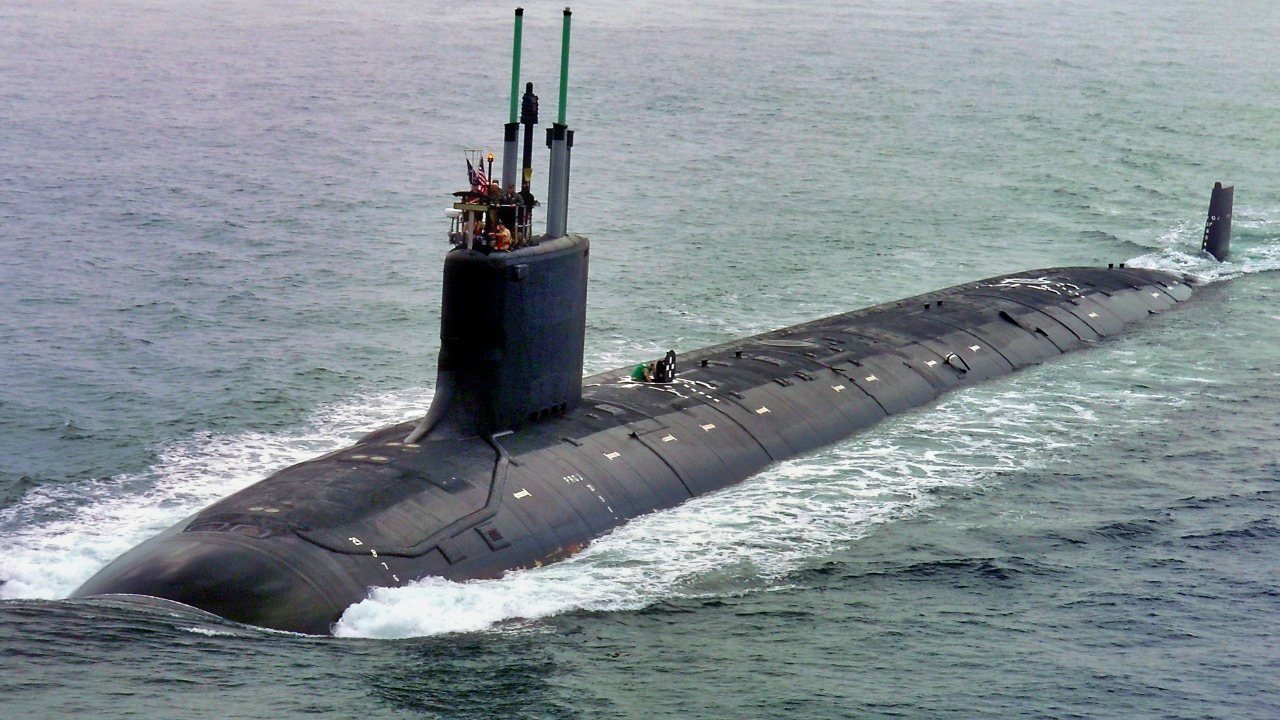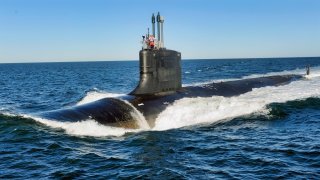How to Make the U.S. Navy Great Again: More Block V Virginia-Class Submarines
The Virginia-class Block V submarine represents a significant leap in the U.S. Navy's naval capability. Equipped with the Virginia Payload Module (VPM), these submarines can carry 40 additional cruise missiles and offer greater payload versatility.
Summary and Key Points: The Virginia-class Block V submarine represents a significant leap in the U.S. Navy's naval capability. Equipped with the Virginia Payload Module (VPM), these submarines can carry 40 additional cruise missiles and offer greater payload versatility.
-Enhanced stealth technology, improved nuclear propulsion, and advanced sensors make them formidable in contested waters.
-Designed for operations like Seabed Warfare and well-suited for shallow regions such as the South China Sea, these submarines play a key role in the Navy's strategy of "distributed lethality."
-However, despite their capabilities, the U.S. Navy faces challenges in meeting shipbuilding demand due to its limited fleet size and struggling shipyards.
America’s Block V Virginia-Class Submarine is Amazing
America’s Navy has striven to maintain the naval supremacy that it held from the end of the Cold War until very recently. While the Navy may not have been as successful in the endeavor lately, it still has some wonderful platforms, including the Virginia-class Block V submarine.
There have been four previous iterations of the Virginia-class submarine. But the Block V is something truly special. It is equipped with the Virginia Payload Module (VPM), an 84-foot extension that can be inserted into the submarine’s mid-body.
The VPM allows a Virginia-class Block V to carry an astonishing 40 additional cruise missiles. This capability is seen as a real game-changer for the Navy, especially as they are forced to retire more Ohio-class guided-missile submarines.
Another key aspect of the VPM is that it allows for the submarine to carry additional payload configurations, enhancing the versatility of this lethal system and increasing the fear factor in the minds of America’s enemies.
The Block V is an all-around upgrade to what came before. It will feature stealth capabilities, courtesy of enhanced acoustic silencing technology. Having enhanced stealth capabilities onboard is essential for conducting long-range, covert operations in contested waters.
Understanding the Block V
A coterie of technological advances is included, such as improved sensors and communications systems that assist in the submarine’s situational awareness. These systems are specifically poised for greater interoperability among other systems and ships in the U.S. Navy, as well as allied systems and ships. These boats can operate along with air assets, too. Thus, the systems contribute significantly to the jointness of the force.
Block Vs have enhanced nuclear propulsion systems meant to extend their already excellent ability to remain submerged for prolonged periods of time. The new propulsion system gives these boats greater speed and range when compared to many of their competitors and predecessors.
One of the most interesting areas of advance is in what’s known as Seabed Warfare. This variant of the Virginia-class is believed to possess a capability to house and deploy lethal unmanned underwater vehicles.The Seabed Warfare capability, as its name suggests, gives the Block V increased ability to conduct military operations at the seafloor.
Given the importance of the world-spanning undersea communications cables that link all the continents together, and the relatively exposed nature of those cables, the Block V has an enhanced ability to conduct espionage against those cables.
Block V’s Were Built to Fight China
America’s Block V Virginia-class submarine seems especially suited for engaging in the shallower waters of the increasingly contested South China Sea.

The capabilities installed on these boats increase long-range lethality and ensure greater survivability. The Navy has announced the need for what they refer to as “distributed lethality.” According to the official Department of Defense website, this concept means that the Navy intends to “increase the offensive and defense capability of individual warships, employing them in dispersed formations across a wide expanse of geography, and generating distributed fires.”
Submarines, specifically the Block V Virginia-class, will play a key role in distributed lethality. They are specifically meant to ensure the Navy can project power into areas like the South China Sea or the Taiwan Strait, where surface warships might be denied access to in a time of war.
General Dynamics Electric Boat and Huntington Ingalls Industries are partnered to develop the Block V. The tenth submarine of this class is currently under construction, and they are widely viewed as a cheaper alternative to the more expensive Seawolf-class submarines.
America Can’t Build Enough
Despite their impressive capabilities, though, having 10 of these boats is nowhere near as helpful as one might think. The Navy is the smallest it has been since the Interwar Years. America’s defense industrial base, notably its shipyards, is in long-term disrepair.
Shipyards can barely meet demand during peacetime for submarines. Should a war erupt that requires the U.S. Navy to respond, it will be difficult to project power effectively while maintaining the fleet even in its current condition.
Author Experience and Expertise: Brandon J. Weichert
Brandon J. Weichert, a National Interest national security analyst, is a former Congressional staffer and geopolitical analyst who is a contributor at The Washington Times, the Asia Times, and The-Pipeline. He is the author of Winning Space: How America Remains a Superpower, Biohacked: China’s Race to Control Life, and The Shadow War: Iran’s Quest for Supremacy. His next book, A Disaster of Our Own Making: How the West Lost Ukraine, is due October 22 from Encounter Books. Weichert can be followed via Twitter @WeTheBrandon.
All images are Creative Commons or Shutterstock.
From the Vault
Russia Freaked Out: Why the U.S. Navy 'Unretired' the Iowa-Class Battleships
Battleship vs. Battlecruiser: Iowa-Class vs. Russia's Kirov-Class (Who Wins?)


